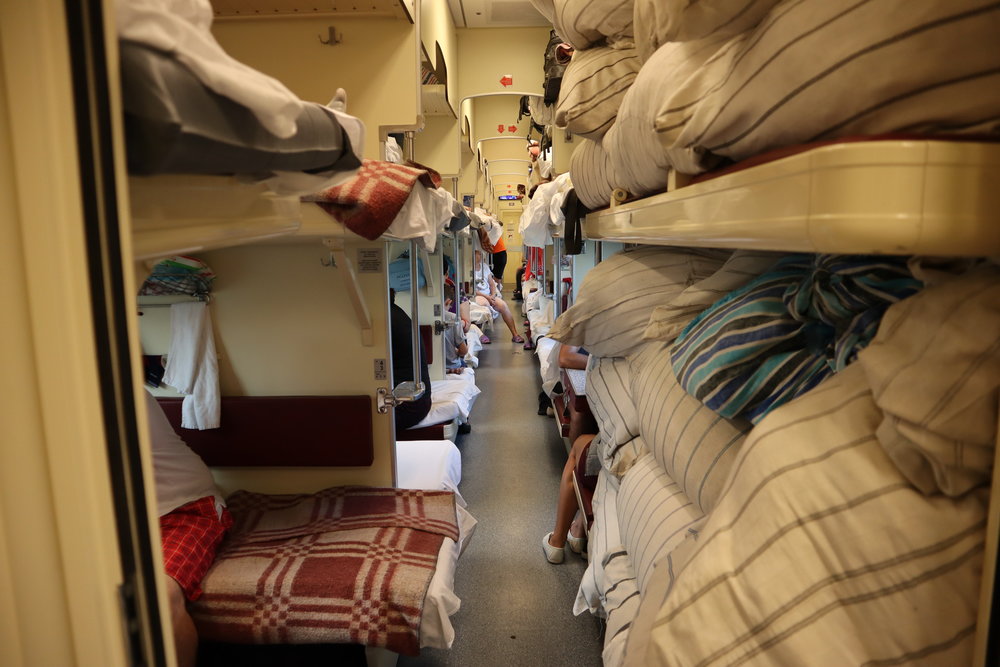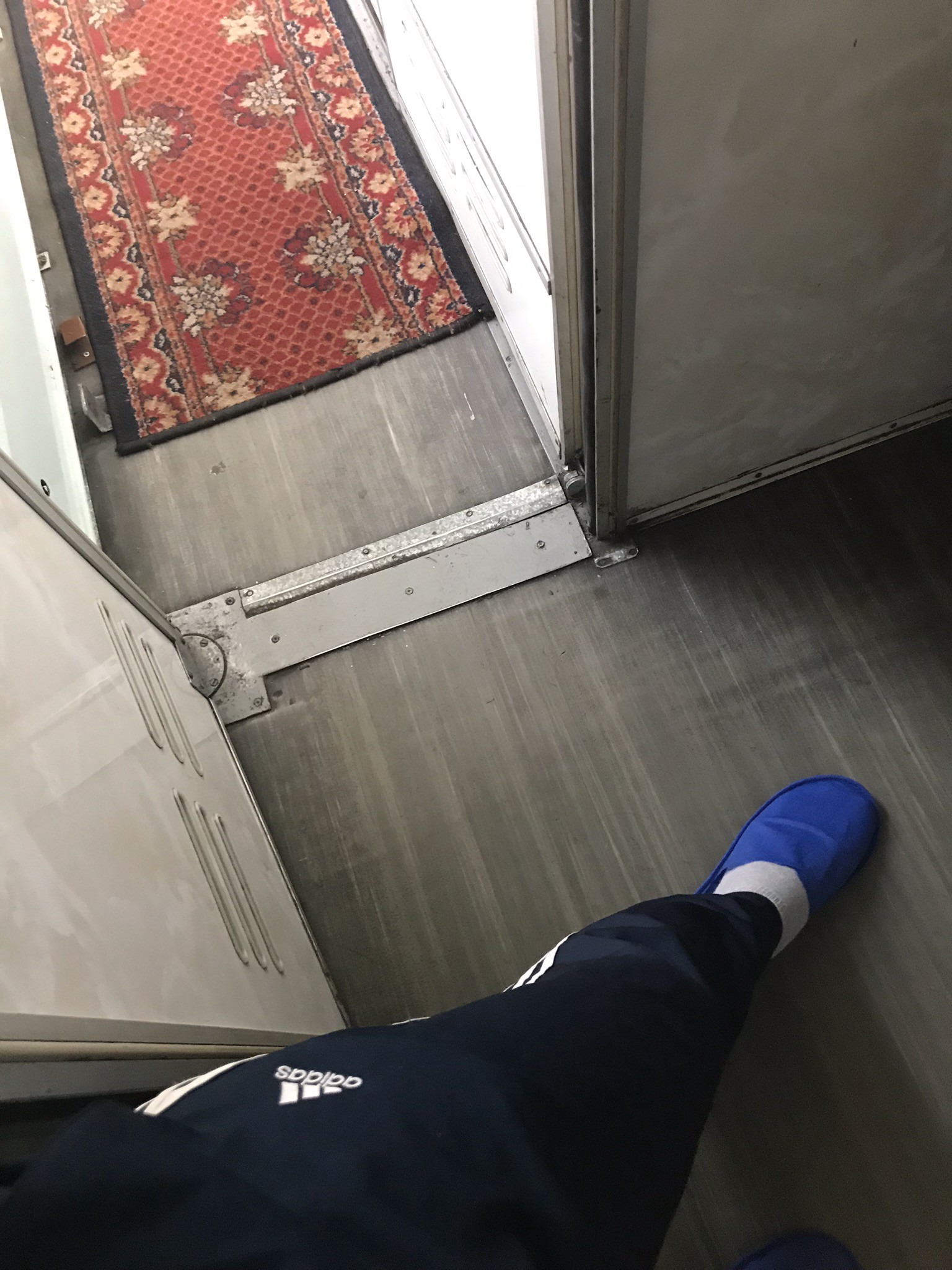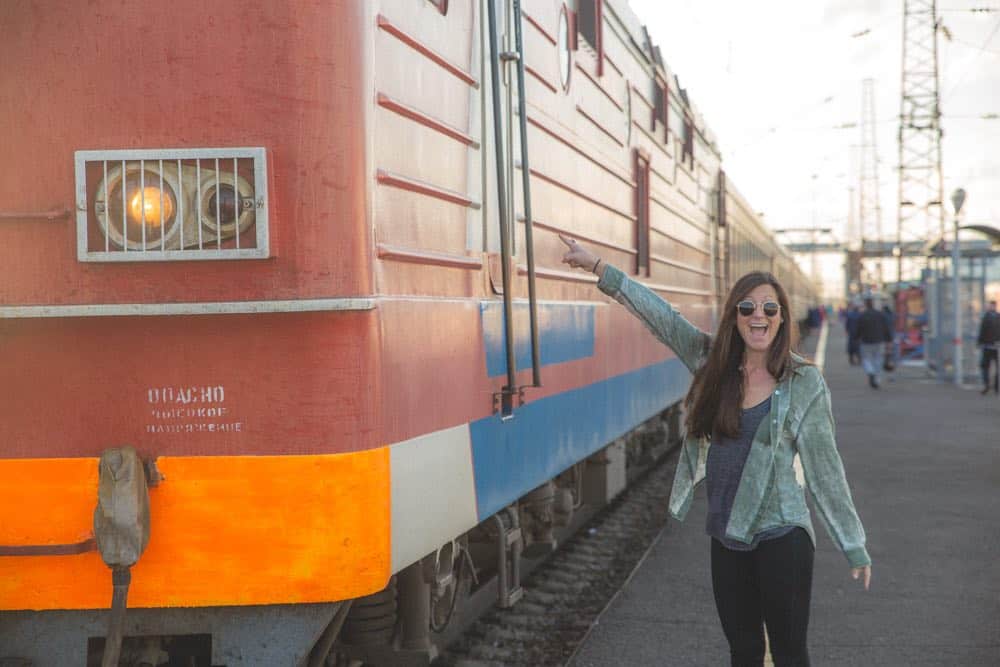Seven time zones, 9,289 kilometers, and an ever-changing view from your window—this is no ordinary train ride. The Trans-Siberian Railway offers one of the most immersive overland travel experiences on Earth, linking Moscow to Vladivostok across the vast expanse of Russia. It’s not just about the destination—it’s about the slow unfolding of landscapes, cultures, and encounters along the way. From the Ural Mountains to Lake Baikal, every stretch reveals a new chapter in Eurasia’s story. This guide lays out what to expect, how to plan, and why this legendary journey continues to captivate travelers across generations and continents.
Classic Route: Moscow to Vladivostok (9,289 km)

Stretching across eight time zones and nearly 9,300 kilometers, the legendary Trans-Siberian Railway offers an unmatched window into Russia’s vast and varied landscapes. This iconic route begins in Moscow and ends in Vladivostok on the Pacific coast, taking passengers through forests, mountain ranges, taiga, rivers, and cities rich in history. The full journey spans approximately seven days if traveled non-stop, though most travelers extend the trip with regional stopovers. Along the way, the train passes through major hubs like Yekaterinburg, Novosibirsk, Irkutsk, and Ulan-Ude, offering a rare, immersive look into Russia’s interior. Whether gazing out at birch-lined horizons or observing daily life at rural station stops, each kilometer brings a new layer of cultural insight. Passengers encounter unique architecture, traditional wooden homes, Orthodox churches, and occasional glimpses of wildlife, especially in more remote regions. The route is well-maintained, with multiple trains operating daily, ranging from basic to luxury standards. Each carriage includes sleeping compartments, restrooms, and a samovar for hot water. For many, riding from Moscow to Vladivostok isn’t just a journey—it’s a transformative passage through one of the world’s most enigmatic countries, blending adventure, history, and personal reflection into a single, unforgettable experience.
Variants: Trans‑Mongolian & Trans‑Manchurian Paths

Beyond the classic route, two compelling alternatives branch off into China, offering cross-border rail adventures that blend Russia’s grandeur with Mongolia’s steppes and China’s dynamic cities. The Trans-Mongolian detours south from Ulan-Ude toward Ulaanbaatar, then continues through the Gobi Desert before arriving in Beijing. It’s an ideal choice for travelers drawn to nomadic culture, yurts, and wide-open landscapes. The Trans-Manchurian skips Mongolia entirely, heading from Chita into northeastern China and on to Beijing via Harbin. Both routes follow parts of the original Trans-Siberian track but provide completely different cultural and geographic experiences after diverging. These variants typically take 6–7 days end-to-end and require multiple visas, so pre-planning is essential. Accommodation standards remain similar, with second- and first-class sleepers available, but Chinese and Mongolian carriages may differ slightly in layout and amenities. These routes also offer onboard staff speaking multiple languages, especially on international legs. Each variant allows travelers to experience multi-country rail travel in a single seamless ride—an increasingly rare and meaningful way to cross vast distances and cultural boundaries. Whether you prefer Mongolia’s open wilderness or China’s urban bustle, both versions extend the spirit of the Trans-Siberian into an even broader adventure.
Book Early: Sleepers from 2nd to 1st Class Coupé

Securing the right sleeper ticket early is essential for comfort and peace of mind on the Trans-Siberian Railway. Reservations open 90–120 days in advance and fill quickly, particularly during summer and holiday periods. Trains offer various sleeping classes, with third class (Platzkart) being open-plan and budget-friendly, second class (Kupé) offering closed compartments with four berths, and first class (SV) featuring two-person compartments for maximum privacy. For those seeking both comfort and value, second-class compartments provide a balanced experience. They are typically shared with local travelers, which can be an excellent way to engage with Russian culture and daily life. First-class is quieter and more spacious, often chosen by couples or solo travelers looking for extra comfort. Amenities vary by train type, but all long-haul sleepers provide clean bedding, storage space, and access to a samovar for tea. Booking through official websites or verified agencies ensures authenticity and eliminates last-minute stress. If you’re planning to mix routes or continue into Mongolia or China, consider booking all segments together to avoid complications. Choosing your sleeper wisely shapes your journey—this isn’t just about reaching a destination, but how comfortably and meaningfully you experience the days between.
Mix Travel Days with Layovers in Kazan, Irkutsk, Yekaterinburg

Breaking up your Trans-Siberian journey with strategic layovers adds immense cultural value without compromising the core experience. Cities like Kazan, Yekaterinburg, and Irkutsk offer rich regional identity, historical depth, and architectural variety—each contributing unique layers to your transcontinental narrative. In Kazan, marvel at the Kazan Kremlin and Islamic-Russian fusion culture. Yekaterinburg, set on the border of Europe and Asia, holds stories of the Romanovs and modern political evolution. Irkutsk, a gateway to Lake Baikal, blends Siberian charm with opportunities for hiking and nature immersion. These layovers allow time to reset, enjoy local cuisine, visit museums, and explore pedestrian-friendly city centers. Most long-distance train tickets can be structured with flexible dates or separate segments to accommodate these stops, giving you the freedom to tailor the itinerary. Connecting with locals, sampling Tatar or Siberian cuisine, and walking through historic quarters give the journey a richer human context. Each city introduces new architecture, dialects, and atmospheres that contrast with the train’s continuity, preventing cabin fatigue and deepening the overall travel experience. A well-planned mix of train travel and city exploration turns the long ride into a layered, immersive adventure.
Pack Layers, Snacks & Reusable Water Bottle

Weather conditions shift dramatically along the Trans-Siberian route, so packing with versatility in mind is essential. The journey spans climates—from chilly Siberian nights to warmer southern stops in summer—which means layers are your best defense against unpredictability. Opt for moisture-wicking base layers, an insulating middle layer, and a lightweight waterproof jacket. Trains can be warm inside, but stepping out at windy station platforms requires readiness. Bringing your own snacks—dried fruits, instant noodles, dark chocolate, or nut bars—ensures you stay energized between dining car visits or remote station stops. While station vendors offer local bites, availability is inconsistent, especially in less populated areas. A reusable water bottle is critical; samovars in each carriage provide hot water, making tea, instant soups, or coffee easy to prepare. Some travelers also pack a small lunch box, thermos, and travel utensils. Buying bottled water adds up over a week-long ride, so sustainable options save money and reduce waste. Thoughtful packing enhances both comfort and self-sufficiency, reducing dependence on onboard offerings and preparing you for any delay or extended stop. When you’re equipped to adapt, your focus stays on the landscapes, stories, and memories unfolding with each passing kilometer.
Bring Binoculars & Telephoto Lens for Scenery

Endless stretches of Russia’s heartland pass silently outside your train window, and with the right gear, you won’t miss a single detail. Binoculars are invaluable for spotting wildlife—herds of reindeer, soaring birds of prey, or foxes darting through the tundra. Especially in Eastern Siberia and near Lake Baikal, natural sightings reward patient observers. Pair that with a telephoto lens (at least 200mm) and you’ll capture candid scenes of remote villages, Orthodox chapels, winding rivers, and golden forests—all from your cabin. Standard phone cameras fall short when trying to preserve these long-distance views or fleeting platform moments. If photography is a priority, pack a DSLR or mirrorless camera with stabilizers or bean bags to help with movement on board. Keep gear accessible during daytime hours, as golden-hour light adds warmth and contrast to your images. Whether you’re an amateur enthusiast or travel documentarian, this journey delivers frame-worthy moments around nearly every bend. Some travelers even journal their photos with timestamps and GPS markers, crafting visual maps of their ride. With the right tools, your Trans-Siberian experience doesn’t just pass you by—it becomes a curated archive of raw, rarely seen moments across continents.
Experience Communal Carriages (3rd Class)

For those craving authentic encounters and budget-friendly travel, third-class carriages—or Platzkart—offer a unique window into everyday Russian life. Unlike private compartments, this open-plan setup sleeps around 54 people in bunk-style beds arranged along both sides of the carriage. It’s noisy, lively, and often filled with conversation, music, and shared meals. You’ll see families playing card games, elderly travelers recounting their histories, and groups forming fast friendships over tea. While it lacks privacy, Platzkart delivers unmatched social exposure. Observing how locals travel, cook instant meals, and navigate long journeys helps demystify Russian culture and builds connection beyond surface tourism. Each bunk comes with linens and storage space under the seats or overhead racks. Bathrooms are located at both ends, and the communal samovar stays in constant use. Safety and cleanliness are generally reliable on major routes, though valuables should stay close. If you’re open to unpredictability and eager for stories, Platzkart may become the highlight of your ride. The atmosphere shifts depending on the crowd, making every journey in third class slightly different—but always memorable. You’re not just crossing a country; you’re joining its rhythm, shoulder-to-shoulder with the people who live it.
Prepare Visas & Buffers for Russia, Mongolia, China

Cross-border Trans-Siberian journeys involve strict visa requirements, and planning these in advance is non-negotiable. Russia requires a visa for most foreign nationals, and the application process includes an invitation letter, travel insurance, and hotel confirmations. Mongolia and China also have their own entry requirements, and you’ll need to secure visas for each country before departing. Apply well ahead of time—ideally 30–60 days in advance—as processing times vary and delays can derail your entire itinerary. Multi-entry or transit visas may be necessary if your route loops back through a country. It’s wise to include buffer days between planned border crossings to account for train delays or document checks. Keep both printed and digital copies of all visas, tickets, and passport pages in case of inspection. Some trains stop briefly at remote border towns for customs, where officers check paperwork on board. Incomplete documentation can lead to denied boarding or fines. If you’re unsure about logistics, consider using a reputable visa agency. Being fully prepared ensures a smooth ride across borders and reduces stress at immigration stops. This step may seem bureaucratic, but it’s essential groundwork for a seamless multi-country railway experience.
Include Side‑Trips: Baikal Hikes, City Tours

Adding regional side trips turns your train ride into an immersive, multi-dimensional adventure. In Irkutsk, travelers often detour to Lake Baikal, the world’s deepest freshwater lake, known for its crystal clarity and scenic hiking trails along the Great Baikal Trail. Short bus rides or guided transfers take you to Listvyanka or Olkhon Island—perfect for walks, rustic stays, or learning local legends. In Yekaterinburg, guided tours explore the last days of the Romanovs, Soviet monuments, and even quirky border markers between Europe and Asia. Kazan, with its Tatar culture and unique Kremlin complex, offers walking tours and river cruises along the Volga. These excursions break the rhythm of long rail days and introduce diverse micro-cultures within Russia’s vast borders. Some activities, like Baikal hikes or cultural museums, offer optional English-speaking guides. You can book many of these in advance or on arrival through local operators. If your ticket allows for stopovers, you won’t need to rush—just align train schedules and accommodations carefully. These side trips add variety and depth, transforming your route from mere transit into a rich travel mosaic, offering both iconic sights and hidden gems along the way.
Use Dining Car, Station Vendors & Bring Tea Cup

Dining options on the Trans-Siberian Railway are surprisingly diverse—if you know where to look. Each long-distance train includes a dining car, typically serving hot meals such as soups, cutlets, rice, salads, and tea. While the menu may be limited, it rotates based on location and operator. Pricing is moderate, and meals are often paid in cash (rubles preferred). That said, many travelers supplement their meals by purchasing fresh pastries, pierogi, smoked fish, and snacks from station vendors at longer stops. Local babushkas often sell homemade fare directly on the platforms—an authentic (and delicious) part of the journey. To truly settle into train life, bring your own tea cup or travel mug. Each carriage includes a samovar, dispensing boiling water for tea, instant noodles, or porridge. Many passengers travel with tea bags, instant coffee, or bouillon cubes, turning simple ingredients into comfort food. Some even pack a small cutting board, butter, and bread for on-the-go sandwiches. Combining these dining methods keeps your meals flexible, budget-friendly, and culturally immersive. You won’t need to rely solely on pre-packed food or expensive items. Eating like a local—whether it’s from the dining car or a vendor’s basket—adds flavor to every stop and story.
Expect Limited Wi‑Fi & Shared Power Outlets

Connectivity on the Trans-Siberian route is inconsistent at best. Wi-Fi is rarely available, even on newer trains. While some first-class carriages may offer occasional signal boosts, most passengers rely on mobile data when passing through towns with reception. A Russian SIM card with a local data plan is advisable if staying connected is crucial—major providers include MTS, Beeline, and MegaFon. Even with mobile access, long stretches of taiga or remote mountains offer zero coverage. It’s wise to download offline maps, music, podcasts, and reading material in advance. Power outlets are available in each carriage, usually shared at the ends or within compartments. However, charging rotation becomes necessary, especially in 3rd class where outlets are scarce. Bring a power bank, universal adapter, and multi-USB splitter to ensure your gear stays functional. Train conductors may limit power usage during peak hours, so charging overnight isn’t always guaranteed. If working or journaling digitally, set device usage schedules to conserve battery. This journey encourages digital detox by design. When screens go dark, attention shifts to scenery, conversations, and the rhythm of the train—reminding travelers that disconnecting can be one of the trip’s most enriching aspects.
Pack Hygiene Essentials & Slip‑on Shoes

Maintaining personal comfort over a week-long train ride requires smart, minimalist hygiene prep. Shared restrooms are located at either end of each carriage and are usually kept clean—but they lack items like soap, hand sanitizer, or paper towels. Packing your own hygiene kit is essential: include wet wipes, toilet paper, travel-sized shampoo, a towel, toothbrush, toothpaste, and a compact mirror. Hand sanitizer and face wipes go a long way in refreshing during long stretches without showers. Trains don’t offer bathing facilities unless you’re booked in premium luxury compartments. Slip-on shoes or travel slippers become a daily convenience—easy to take off when crawling into your bunk and comfortable for bathroom visits or quick platform strolls. Flip-flops can also double as shower shoes if you stay overnight in hostels during stopovers. A small bag with essentials should always remain within reach, especially in 3rd class where luggage is stored overhead or below the berth. Cleanliness boosts both comfort and morale on multi-day rides, making this kit as vital as your passport. When you feel refreshed, you enjoy the journey more fully—without dreading the next restroom stop or morning routine.
Track Moscow Time Across All Stops

Trains on the Trans-Siberian Railway operate on Moscow Time, regardless of which time zone you’re physically in. This detail, often overlooked, is crucial for avoiding missed trains and scheduling confusion. Every ticket, station board, and departure time is listed in Moscow Time (UTC+3), even when you’re thousands of kilometers east in a region operating on UTC+9 or more. While this system standardizes rail operations, it creates a mental time warp for travelers, especially over multi-day journeys. To stay aligned, set a secondary clock or world clock app on your phone to Moscow Time and reference it when planning layovers, meals, or wake-up calls. Write departure times in both local and Moscow Time in a notebook if needed. Conductors and station staff will often use Moscow Time for announcements, so staying in sync prevents surprises. Some seasoned travelers tape a paper schedule with all stops and adjusted time zones above their bunk for easy reference. Misunderstanding the time difference could mean missing your train by hours. Keeping track ensures punctuality, reduces anxiety, and smooths over interactions across cities—making your transcontinental ride both efficient and stress-free.
Learn Basic Cyrillic for Stations

Many station signs and timetables across the Trans-Siberian route are written only in Cyrillic, especially outside major cities. Learning the basics of the Cyrillic alphabet drastically improves your ability to navigate. Fortunately, Cyrillic is phonetic—once familiar with the letter sounds, you’ll start recognizing place names like “Иркутск” (Irkutsk) or “Новосибирск” (Novosibirsk) even without formal Russian skills. Start with commonly used letters and station words such as “вход” (entrance), “выход” (exit), and “перрон” (platform). Printable charts or flashcards can be useful study aids, and even 30 minutes of practice a day before your trip helps immensely. Reading the signs correctly allows you to double-check that you’re at the right platform or off-boarding at the correct stop. It also eases the experience in local shops or cafes during layovers. While Google Translate or translation apps are helpful, they don’t always work in low-signal areas, making offline knowledge critical. Russian passengers and staff often appreciate the effort, and a few words can open doors to small conversations or helpful guidance. Picking up the script turns you from an observer into an active participant—and may even inspire deeper cultural curiosity during your journey.
Bring Pocket Translator App + Power Strip

Traveling across vast linguistic and geographic terrain, communication gaps are inevitable. A pocket translator app, such as Google Translate with offline Russian, Mongolian, and Chinese packs, is invaluable. These tools allow you to decipher signs, menus, and engage in basic interactions with conductors or locals. The camera function can translate printed text in real time, particularly helpful for reading restaurant menus or station announcements. While not flawless, offline language tools prevent misunderstandings that could impact boarding times or route decisions. In parallel, access to charging outlets is limited—especially in older carriages—so bringing a compact power strip or USB hub lets you maximize every socket. Shared outlets can be competitive, so having your own multi-device solution allows simultaneous charging of a phone, camera, power bank, and translator device. Include a surge protector if your gear is sensitive. Some travelers also carry small extension cords to reach awkwardly placed wall plugs. When you’re properly charged and linguistically equipped, you’re less likely to feel isolated, rushed, or confused. This pairing of tech preparedness bridges both power and language gaps—two challenges that can otherwise compromise the ease and joy of a long-haul train journey.
